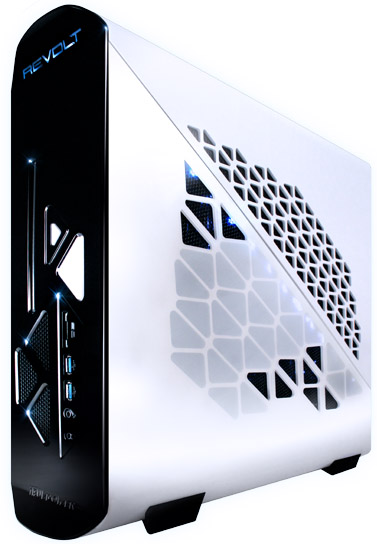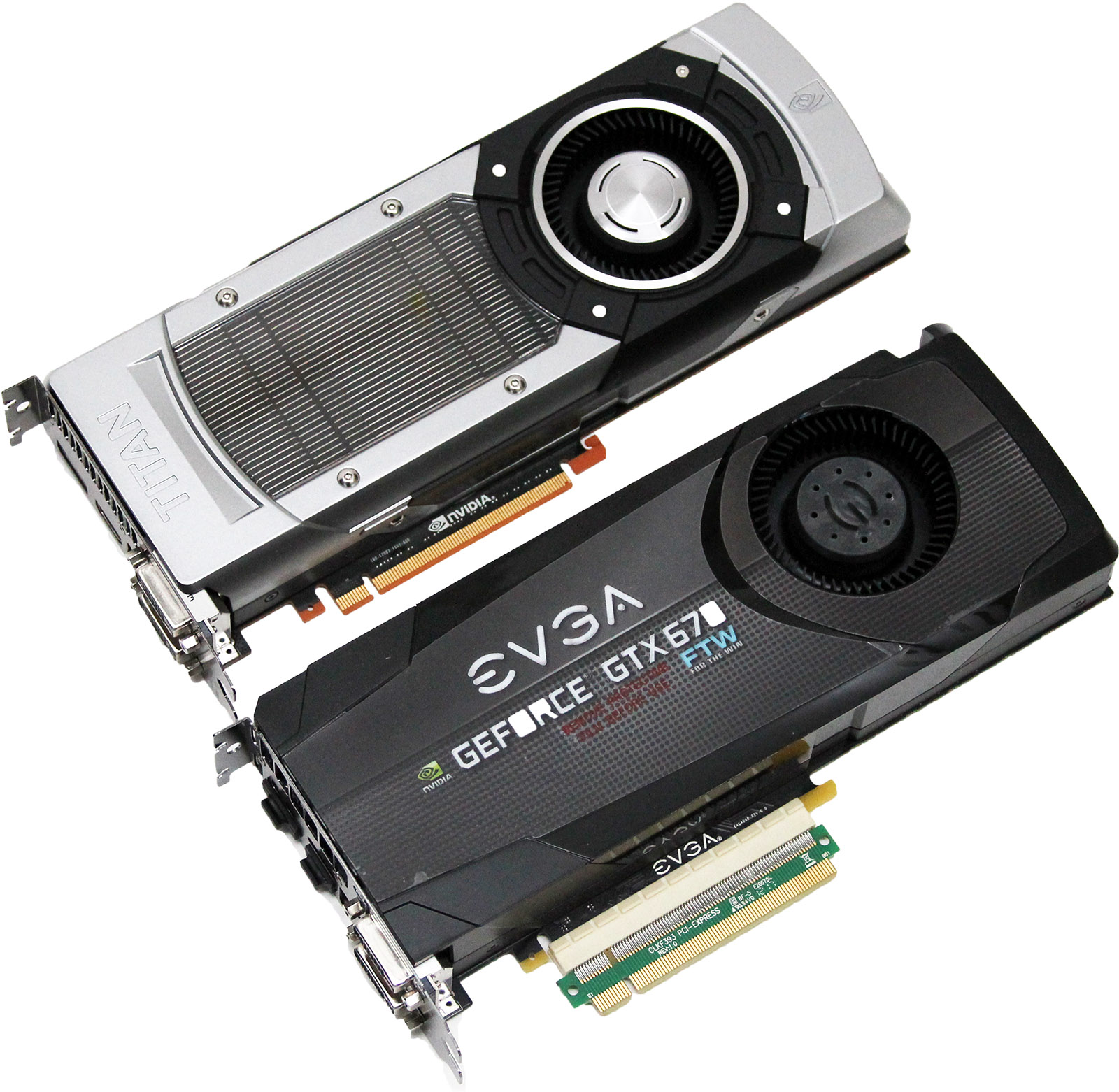Nvidia GeForce GTX Titan 6 GB: GK110 On A Gaming Card
After almost one year of speculation about a flagship gaming card based on something bigger and more complex than GK104, Nvidia is just about ready with its GeForce GTX Titan, based on GK110. Does this monster make sense, or is it simply too expensive?
...Or Elegance In A Mini-ITX Box
There’s one other place I see a grotesquely expensive single-GPU card making more sense than a pair of value-oriented boards: in an environment only able to accommodate one dual-slot solution. You may have already read my opinions of Falcon Northwest’s Tiki—in fact, I liked that system enough to buy it when my eval was up. Now I have iBuyPower’s Revolt in the lab, and Digital Storm wants to tell the Tom’s Hardware audience how its Bolt came to be (and then came to be improved upon).
The sample sent to our lab includes a Core i7-3770K on iBuyPower’s own branded iBP-Z77E/S Revolt motherboard. A single 8 GB DDR3-1600 memory module leaves one of the platform’s channels unpopulated, unfortunately (though we’re told our system should have come with two 4 GB sticks). From there, storage is tiered, with 1 TB of disk-based capacity complementing a 120 GB Intel SSD 330. It took me by some surprise that such a capable list of specs came out to a fairly modest $1,515.
Officially, iBuyPower hasn’t qualified the GeForce GTX Titan. But it does have the card running in the lab and says it works. That was all of the encouragement I needed to transplant a Titan into the place previously occupied by my review system’s GeForce GTX 670. This isn’t something I’d recommend to anyone, by the way. The Revolt is somewhat user-serviceable, but getting it back together without smashing down on its water-cooling system is challenging.
At any rate, the Titan is a drop-in replacement. Its centrifugal fan pulls air from the same place as a reference 670. It’s a little longer than the GK104-based board, but there’s plenty of room in the Revolt for it to fit. Really, the only spec you need to worry about is Titan’s 250 W TDP, which gobbles up much of the Revolt’s peak output (our system includes a 500 W 80 PLUS Gold-rated supply from FSP). Nvidia recommends a 600 W PSU.
Fortunately, companies like iBuyPower, Falcon Northwest, and Digital Storm will take care of guaranteeing their mini-ITX machines support Titan before they start selling the card. But what I’m hearing is that GeForce GTX Titan will replace 680 as the highest-end option offered in the most diminutive systems. The allure of small form factor gaming naturally gets even stronger as a result.
What’s the experience like? Faster, without an impact on acoustics. Neither the Tiki nor the Revolt are silent. They’re both quiet, though. Where you can tell a difference between them is in the pitch they generate. Falcon Northwest’s box makes noise at a lower frequency, while the Revolt’s output is a little more noticeable (perhaps as a result of its 40 mm power supply fan). Consequently, the graphics card’s fan isn’t perceptible at idle, and incredibly quiet under load.
So long as system builders are able to give it enough power, GeForce GTX Titan minds its manners in the confines of very cramped cases. The card exhausts all of its waste heat out of an externally-facing vent using a fan that cuts through air almost silently. Pretty amazing for a 250 W card hosting a 7 billion transistor GPU.
Get Tom's Hardware's best news and in-depth reviews, straight to your inbox.
Current page: ...Or Elegance In A Mini-ITX Box
Prev Page Brute Force With Three-Way SLI... Next Page Ready For The Numbers?-
jaquith Hmm...$1K yeah there will be lines. I'm sure it's sweet.Reply
Better idea, lower all of the prices on the current GTX 600 series by 20%+ and I'd be a happy camper! ;)
Crysis 3 broke my SLI GTX 560's and I need new GPU's... -
Trull Dat price... I don't know what they were thinking, tbh.Reply
AMD really has a chance now to come strong in 1 month. We'll see. -
tlg The high price OBVIOUSLY is related to low yields, if they could get thousands of those on the market at once then they would price it near the gtx680. This is more like a "nVidia collector's edition" model. Also gives nVidia the chance to claim "fastest single gpu on the planet" for some time.Reply -
tlg AMD already said in (a leaked?) teleconference that they will not respond to the TITAN with any card. It's not worth the small market at £1000...Reply -
wavebossa "Twelve 2 Gb packages on the front of the card and 12 on the back add up to 6 GB of GDDR5 memory. The .33 ns Samsung parts are rated for up to 6,000 Mb/s, and Nvidia operates them at 1,502 MHz. On a 384-bit aggregate bus, that’s 288.4 GB/s of bandwidth."Reply
12x2 + 12x2 = 6? ...
"That card bears a 300 W TDP and consequently requires two eight-pin power leads."
Shows a picture of a 6pin and an 8pin...
I haven't even gotten past the first page but mistakes like this bug me
-
wavebossa wavebossa"Twelve 2 Gb packages on the front of the card and 12 on the back add up to 6 GB of GDDR5 memory. The .33 ns Samsung parts are rated for up to 6,000 Mb/s, and Nvidia operates them at 1,502 MHz. On a 384-bit aggregate bus, that’s 288.4 GB/s of bandwidth."12x2 + 12x2 = 6? ..."That card bears a 300 W TDP and consequently requires two eight-pin power leads."Shows a picture of a 6pin and an 8pin...I haven't even gotten past the first page but mistakes like this bug meReply
Nevermind, the 2nd mistake wasn't a mistake. That was my own fail reading. -
ilysaml ReplyThe Titan isn’t worth $600 more than a Radeon HD 7970 GHz Edition. Two of AMD’s cards are going to be faster and cost less.
My understanding from this is that Titan is just 40-50% faster than HD 7970 GHz Ed that doesn't justify the Extra $1K. -
battlecrymoderngearsolid Can't it match GTX 670s in SLI? If yes, then I am sold on this card.Reply
What? Electricity is not cheap in the Philippines.



